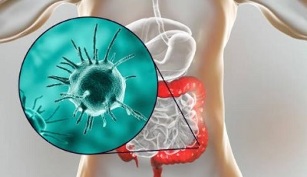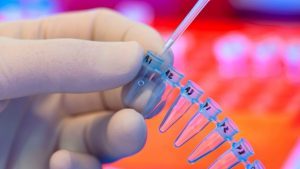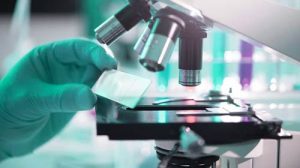
Parasitic diseases are a large group of diseases caused by helminths, some arthropods and protozoa.
Despite all the achievements of modern medicine and developed hygiene, according to statistics, about 90% of people around the world at least once in their life face these pathologies. How to suspect an ailment and what tests should be carried out by parasites, you can learn from this article.
Types of parasites
Parasites are organisms that survive thanks to the vital activity of living beings. Settling in the human body, in the process of their growth and reproduction, they lead to a deficiency of trace elements, vitamins, proteins and other nutrients. Both can lead to relapses and exacerbations of chronic pathologies and cause damage to internal organs on their own.
There are the following types of parasites that can cause disease in humans:
- protozoa (amoeba, lamblia);
- pathogenic microorganisms (chlamydia, mycoplasma and others);
- helminths (nematodes, pinworms, bovine and porcine tapeworms and so on);
- parasitic arthropods (scabies mite, demodex).
The main feature of the pathologies they cause is the long-term asymptomatic course or with low symptoms. Parasites cleverly hide their existence, trying to "squeeze everything out of the host's body" until its reserves are exhausted and the organ or tissue is badly damaged.
Symptoms of parasitic diseases
Parasitic pathologies most often mean helminthiasis - diseases caused by the presence of worms in the body. In most cases, they are found in children, however they can develop in adults in case of neglect of hygiene rules. For a long time after infection, they either do not manifest themselves in any way or are accompanied by subtle symptoms that are often left unattended.

Each disease is characterized by certain characteristics, but there are also common symptoms:
- Headache, dizziness, increased weakness and fatigue. These manifestations are the result of intoxication resulting from poisoning by waste products of parasites.
- Exacerbation of bronchial asthma and allergic rhinitis, dermatitis, urticaria. They arise due to hypersensitivity to helminth cells and their excretion products.
- Digestive system disorders (abdominal pain, nausea, vomiting, heartburn, constipation and diarrhea). Helminths that parasitize in the intestinal lumen lead to inflammation, intestinal obstruction due to blockage of the intestinal lumen.
- Anemia, vitamin deficiency, weight loss. It occurs due to a deficiency of proteins, vitamins and minerals, a decrease in the production of hormones.
- Sleep disturbances, chronic fatigue, irritability, nervousness, muscle and joint pain.
Detection of most types of helminths requires fecal analysis or donation of blood for the presence of specific antibodies. You can take the study at the clinic of your place of residence, upon admission to hospital, as well as in any of the private laboratories. Some medical centers offer to undergo a prolonged examination, during which it is possible to diagnose the presence or absence of several types of parasites in the body at once.
Pest test

What tests should be performed if a parasitic disease is suspected, the attending physician will tell based on complaints, history and clinical manifestations of the disease.
Diagnosis begins with a complete blood count. The most typical changes in helminthiasis will be:
- Decrease in hemoglobin levels and decrease in the number of red blood cells (resulting from a lack of protein and iron).
- Increase in the number of leukocytes, acceleration of ESR (these are signs of inflammation of the internal organs, especially the gastrointestinal tract).
- An increase in eosinophils (a characteristic symptom of allergy that occurs in response to the irritating effect of the waste products of helminths).
For a more accurate diagnosis, analysis of feces for helminth eggs and scrapings is used. When examining feces, it is possible to detect the causative agents of enterobiasis, ascariasis, hymenolipedosis, and also to detect the presence of protozoan microorganisms (lamblia).
It is important to remember that with a single study, the probability of detecting worm eggs in feces is 30%. Therefore, to clarify the diagnosis with the first negative result, the study is carried out two more times with an interval of 2-4 days.
To improve the accuracy of the study, it is important to carefully prepare for the delivery of stool for analysis. Collect biological material only in a special sterile container, which can be purchased at the pharmacy. A few days before the analysis, you should stop eating coloring products (beets, red berries, exotic fruits, sweets and drinks with dyes), do not use laxatives and rectal suppositories.
Immunoassay
With the help of ELISA analysis in adults and children, it is possible to detect antibodies produced by the human body in response to the presence of foreign objects in it. For this, blood is taken from a vein, in which, under laboratory conditions, specific IgG antibodies against lamblia, trichomonads, pork and bovine tapeworms, trichinella, echinococcus, toxocara, nematodes and pinworms can be detected. With the help of this study, it is possible to detect the presence of almost any parasite in the human body.
Preparing for research is not difficult. It is necessary to carry out the analysis in the morning, on an empty stomach after 8-10 hours of fasting. On the eve of the study, it is recommended not to take antibacterials and antihistamines, and also not to eat allergenic foods (honey, seafood, exotic fruits and red berries, nuts). Immediately before donating blood, experts recommend relaxing in the laboratory waiting room for 10-15 minutes.
The search results become known after 1-2 days. These studies are done both as a primary diagnosis and as a control of ongoing treatment.
Timely detection and modern and effective treatment of parasitic diseases help to avoid complications that are dangerous to health.




























